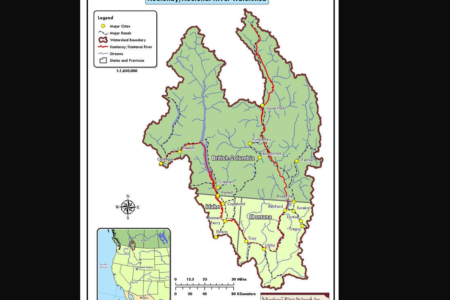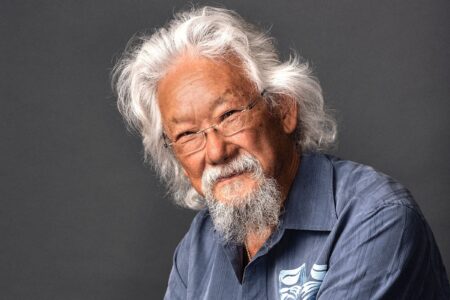Study of a Study: How to Decide on a Rossland Gondola
Every day that I toss my skis into the back of my pickup truck and drive up to Red, usually picking up and passing a few hitch hikers, I find myself wishing there was a better way. Wishing that I could save on gas, cut emissions and save the sometimes long and cold wait of mid-week hitch hikers looking for a way up to the ski hill. I hold out hope that maybe someday I could just walk several blocks, hop on a gondola, and casually glide over the mountainside in a sheltered gondola cabin, avoiding searching for that perfect parking spot, putting boots on in the parking lot and just pop out somewhere up on Red and ski on with my day.
Every day I walk past the Emcon yard on the way to and from my house in the area and in between hellos and smiles to passing neighbours, I often find myself looking up at Red Mountain and visualizing various types of gondolas draped up the side of the slope, imagining the hundreds of car trips everyday to and from the ski hill that could be avoided with its construction.
That day dream took its first baby steps forward last week with the announcement that the City of Rossland has received $25,500 in funding through the Community Economic Diversification Initiative of Western Economic Diversification Canada to study the feasibility of constructing and operating a gondola linking the downtown core with Red Mountain.
Curious as to what was involved in deciding whether the gondola would make sense or not, I got in touch with Paul Mathews the President of Ecosign Resort Planners out of Whistler and asked him just that.
So what exactly is involved in the current feasibility study?
There are two or three steps to the study. The first one is what I call market feasibility. We’re measuring, in cooperation with the ski area, the volume of skiers that they have up there on a daily basis with two years of historical data. We’re also doing occupancies of the various hotels and rental places both downtown and up at the ski hill. We are then undertaking what is called a land density study. We’ve done this in quite a few venues around the world and developed our system 16 years ago to count the tourist density and calculate the density of people that might reside in that area. Then we calculate what kind of yield or flow of tourists or guests would come out of these different centres. That’s where we figure out what type of capacity would be required. Capacity is everything in transportation.
The next step is what I would call a physical or technological capacity. We’re doing a parallel study of all kinds of topographical maps, solar shading, where it would be cold and not cold, and where snow might stay if we were to have a ski run, and looking for potential alignments.
The second part of the technical feasibility would be systems that could match or be placed on the terrain that we find and be built with a capacity that the market feasibility determines.
The third section is an economical feasibility study. We’re almost certainly going to test several different alignments and systems because of different costs not only to build it but to operate it, and we have very good operations data from different types of systems we’ve designed in Austria, Europe, the United States and Canada and we’ll have to make some adjustments for the quote ‘Rossland factor’ and what type of system we’re looking at. We take into account things such as how long it is, for example, if it’s a mono cable gondola and the grips open and close and the longer it is than the more cabins and grips you need. Every time a grip opens and closes there are costs associated with it. After a thousand cycles, it requires maintenance–and those types of details.
It sounds like you’ve developed a very sound process.
It’s very logical; there is zero bullshit in this whole process.
Once you’ve compiled that data, what do you do with it?
By the end of March, we’ll have a sub consultant, Dopplemayr, the world’s preeminent lift maker, help us on locating towers and getting costs to match exactly the study so we have to give them alignments by mid-February.
That will take us into March and then we’ll be running the economic models. Factoring in and looking at the demand side and the price that you’d pay to ride it. Similar projects like in Telluride Colorado, for example, it’s free, paid by property purchase tax. We’ll discuss different funding options with BC Transit or Rossland Transit or Translink or just user pay or whatever is included in the lift ticket for example. Then write up the report which will be presented before the end of March.
Are there any particular challenges with the Rossland project?
There are some tricky things in Rossland as you well know with the history of the mining there. There are a lot of places on the sides and shoulders of Red Mountain where ‘thou shall not go’. Some lands might not have the structural integrity to handle the loads; we’re not quite sure yet. Teck has been helpful to us in providing locations of some of these old claims and digs and things like that. We’ve got them zoned off as no-go zones for now. If we have to cross one, then maybe what we have to do is make a higher tower, span it and come back down or something. We’re not at the point where I can answer that just yet, but that’s theoretically possible.
Personally, do you think the Gondola would fly here?
Conceptually, I like the idea. I worked in Rossland way back in the late seventies early eighties on the master plan back in Fred Bosinger’s time. It is work. Gondolas have worked in Telluride from the new resort down to the old town and it works great. Aspen keeps talking about it. Beaver Creek’s got one. The general concept is sort of positive. Whether there is enough demand and ridership in Rossland: that will be the question.
The concept of taking hundreds of cars of the road each day sounds like a real environmental benefit to town.
This is a pretty green solution. There is one in Panorama where they go from a parking lot up into the resort to keep cars from going all the way through the resort. It definitely needs to be looked at as another component of the transportation system rather than just a ski lift.
It could potentially open up some new summer business as well, I imagine?
We’re also looking at some things that could sort of stimulate business and demand for the gondola. For example would there be great hiking and biking trails for the summer that would help drive the business for people wanting to use it. That’s again part of the study of all the terrain to see what’s feasible.

























